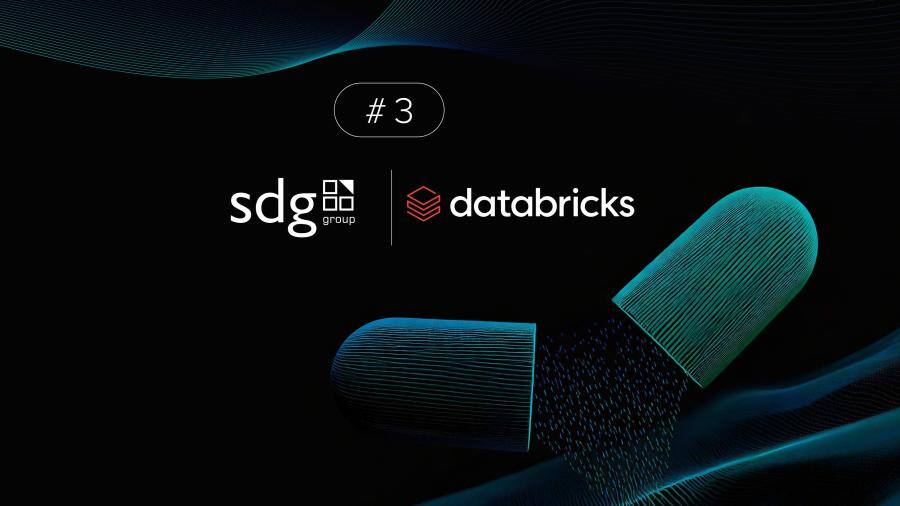Data & Analytics technology is advancing at a breakneck pace, impacting businesses in many ways like all ever-changing markets. From democratizing technologies, to developing innovations around the cloud, new AI capabilities, and much more; several trends are gaining traction in the market.
With this horizon and data technology on the rise, it is critical to stay informed of what's coming. This year, we've identified the key trends to watch out for to stay competitive by 2022.
Find out which trends are already creating market impact, which are on the rise, and those slowly coming into play. We've segmented the 10 trends for 2022 into three categories:
-
Given Trends
-
Trends on the Rise
-
Slow-Shift Trends
Given Trends
These trends are a must, and they require action now.
1.) Born in the Cloud. The Next-Gen of Data Warehousing: Data Mesh, Data Fabric & Data Vault 2.0
Cloud computing makes it easier for enterprises to adopt data architectures, models with deep, scalable, and transformative structures. The cloud opens the door to the next generation of the Data Warehouse by enabling Data Mesh, Data Vault 2.0, and Data Fabric, technologies and practices designed and built natively in the cloud.
A case in point is Data Mesh, a holistic approach to managing data where a distributed domain-driven architecture, treating data as a product, self-service data infrastructure design, and ecosystem governance converge. The "data mesh" allows data products to be linked across domains enabling information exchange without relying on storage.
This brings us to Data Fabric, an architecture that enables data access and sharing in a distributed environment: a private, public, on-premise, or multicloud cloud system. This layer of scalable data and connection processes automates ingestion, selection, and integration by circumventing data silos. In this way, the "data fabric" continuously identifies and connects data from disparate applications, discovering unique and business-relevant relationships. This information enables more effective decision-making, providing value through rapid access and insight over traditional data management practices.
We also find Data Vault 2.0, the next-level evolution of the Data Vault that originates from the cloud, and DataOps, an agile framework for collaborative configuration and management of technologies, processes, and data. All these current trends have a common denominator: they are based on the immense potential of the cloud to try to provide quality answers to the continuous demands for innovation and flexibility of organizations.
2.) DataOps Power-Up: AI boosts Automation and the Metadata Lake Scale-up
DataOps is a technological framework inspired by the DevOps movement. Its goal is to create predictable delivery and change management of data, models, and related artifacts. How is this possible? By leveraging technology to automate data delivery with optimal security, quality, and metadata to improve data use and value in a dynamic environment. DataOps activates the levers demanded by data-driven enterprises: governance, flexibility, scalability, efficiency, and automation.
This trend -- which we mentioned last year -- is now evolving, thanks to Artificial Intelligence and Machine Learning creating hyper-automation environments. Because of this, organizations are now rapidly identifying, examining, and automating data management processes.
These processes directly influence Data Quality; allowing companies to be faster in profiling and polishing their data - Data Observability; providing greater agility to monitor data pipelines - Data Cataloging; facilitating an increasingly strategic vision in functionalities, such as lineage and inventory; and in DevOps, since intelligent automation reduces manual operations and increases cross-functional collaboration between teams.
In addition, within DataOps and its "vertical" Data Governance design, the Metadata LakeHouse is gaining relevance. This platform makes it possible for metadata to become the motherboard of an enterprise’s entire data management environment.
3.) A Paradigm Shift: from Product-Centric to a full Customer-Centric & Omnichannel approach
To meet and exceed customer demands, we must put the consumer at the center of the shopping experience. With this in mind, the outdated multichannel strategy has now been taken over by an omnichannel approach, enabled particularly by hyperconnectivity (cloud, 5G, IoT). To put it simply, the barriers between digital and physical channels and the campaigns that encompass both will phase out completely. The focus is no longer centered on just the product itself and the different “storefronts” it’s sold on. Instead, the focus will be on the customer to provide them a unique and homogeneous shopping experience wherever they are.
By collecting data from the different channels, relevant information about the entire customer journey is extracted. With this information, it is possible to analyze the impact of each touchpoint while optimizing processes and improving the service or product offering based on the feedback received. Companies offer hyper-personalized products and services thanks to data analytics and intelligent process automation. This approach facilitates the feeding of Artificial Intelligence models activated in real-time - or even predictively - thus reducing latency times, time-to-market, and associated costs.
4.) D.A.T.A. Data as A Transformational Asset
Data does not have a value per se but is postulated as a business advantage to the extent that it becomes a monetizable and differentiating asset. D.A.T.A. should be understood here as the data set, algorithms, practices, direct impact, and information available to a company. Organizations that take advantage of this information and extract value will differentiate themselves from their competitors.
Calculating the value of data and what it encompasses - from algorithms, how they interrelate, to the best practices, etc. - directly impacts a company's share price and attractiveness. Now or never: the market rules are already changing - taking the examples of companies betting on R&D or the start-ups themselves - so now is the time to focus on the competitive advantage of data by understanding and harnessing all its transformational power.
Trends on the Rise
These trends will have a significant impact.
5.) Trustable Environments powered by Cybersecurity Analytics, Blockchain, and Privacy-Enhancing Computation
Cybersecurity strategies that protect traditional perimeters: processing, sharing, transferring, and analyzing are becoming more prevalent among businesses. This proactive approach to cybersecurity is identity-based and uses data collection and analytics (Cybersecurity Analytics) capabilities for faster threat detection and manual security tasks.
The cybersecurity environment is also supported by Blockchain technology, a great ally of cybersecurity as it guarantees data storage through its decentralization and encrypted information. This technology brings great value, especially in identity, infrastructure protection and data flow traceability.
In this context, Privacy-Enhancing Computation (PEC), a set of technologies that protect data while processing, sharing, transferring, and analyzing, also appears on the scene. PEC adoption is increasing, particularly for fraud prevention. According to Gartner, "by 2025, 50% of large organizations will adopt the technology to increase the privacy of data processing in untrusted environments or multi-data source analytics use cases."
6.) When two forces collide: Self-Service 2.0 & Auto ML
Companies are betting on Self-Service 2.0 and Auto Machine Learning models to increase their insight extraction capabilities. This happens because these technologies accelerate the adoption of solutions by giving direct access to end-users, democratizing access to data, and focusing on the generation of insights.
On the one hand, Self Service 2.0 is integrating and leveraging the analytical capabilities of AI-driven models. On the other hand, Auto ML uses the visual and reporting aspect to present its advanced algorithms. These evolutions show how these technologies facilitate a 360º approach in each domain. By doing this, they cover the analytical aspects for all users.
In conjunction with this "shock," we see companies included in the Self-Service and Auto ML portfolio business moves and acquisitions. Companies are working to close the gap between advanced analytics and BI by making predictive capabilities available to non-data scientists.
7.) Responsible and Private AI as an Imperative
The disruption brought about by Quantum Computing coupled with AI leads us to have a great responsibility around the ethical management of data. After the success of data privacy (driven by the GDPR legislation), it is now time to regulate its use, ensuring its ethical and responsible development when it impacts citizens. Companies and institutions must define their "AI for Good" strategy to minimize technical debt and commit to sound engineering processes with transparent and fair algorithms.
In this line, the new concept of Private AI arises. In public administrations or entities where data sharing is complex, AI strategies are being created to obtain insights using encryption and thus expose data as little as possible.
8.) The next big thing: Quantum AI Gains Momentum
More and more companies are investing in Quantum AI because they expect it to become the next revolution. We are currently experiencing significant parallelism in how quantum computing develops and its convergence with advanced analytics techniques. We must make conscious and consistent use of this new paradigm’s benefits.
Quantum AI will take advantage of the processing superiority of Quantum Computing to obtain results unattainable with classical computing technologies. It will enable the processing of large data sets, more agile resolution of complex problems, and improved business modeling and insight. There are many benefits that these techniques offer after the leap from the scientific to the business world. There are few companies today that do not take advantage of the benefits of encapsulating knowledge that was previously only actionable by humans within the framework of intelligent and agile decision-making. We are on the threshold of a technological trend that will reshape the future of markets and industries in the coming decades.
Slow-Shift Trends
These trends are starting to surface.
9.) Metaverse Ecosystem: Enabling Extended Reality
Metaverse is not just a buzzword in the technology sector; it’s an ecosystem that will facilitate the exploitation of the so-called EX, i.e., extended reality. Under the EX umbrella, we find all immersive technologies that merge the real world with the virtual one: augmented, virtual and mixed reality.
The set of products and services built around the Metaverse encourages innovation in devices and hardware - such as glasses and contact lenses - that facilitate extended reality, which will become increasingly accessible to companies and end-users. The rise of the metaverse will directly influence the innovation and maturity of EX devices: they will cost less and accelerate the entire technology cycle. The forecast is that the metaverse ecosystem will move around $800 billion by 2024 and $2.5 trillion by 2030. (Bloomberg Intelligence). Extended reality is a set of technological resources that will offer users to immerse themselves in interactive experiences based on the combination of virtual and physical dimensions.
10.) Generative AI: A Leap Forward to Auto-generated Content
Artificial Intelligence is usually used to train algorithms based on conclusions, but can it create content and innovate on its own? The answer is yes, and it lies in Generative AI, one of the most promising developments in the AI environment in the coming years. Generative AI allows computers to automatically recognize underlying patterns related to input information and then generate new original content.
To put it in another way, Generative AI is a form of Artificial Intelligence that learns digital representation of existing content, such as transaction data, text, audio files, or images. It uses it to generate new, original and realistic artifacts that retain a resemblance to the training data. This enables generative AI to be a rapid innovation driver for companies in software development, such as the production of new pharmaceutical products, weather analysis, and fraud detection.
.png?width=2000&name=SDG%20-%20Logo%20White%20(1).png)



















